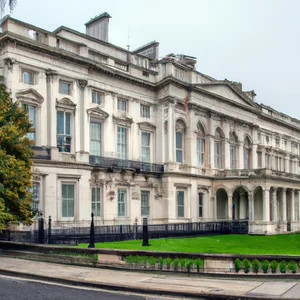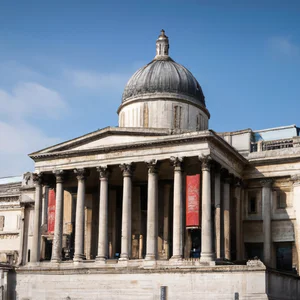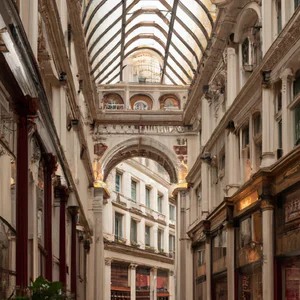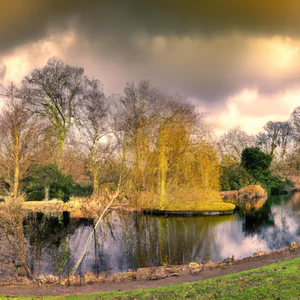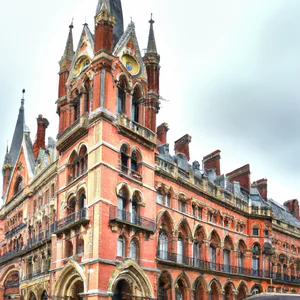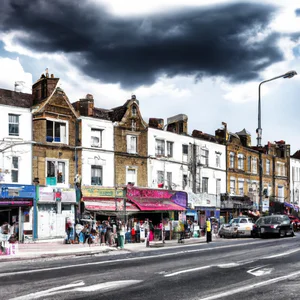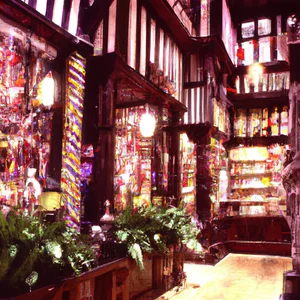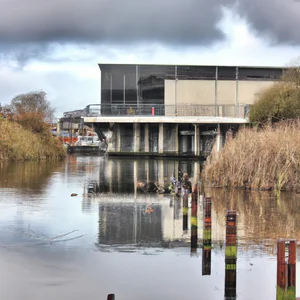Book your experience
Top London Markets
Hey, let’s talk a bit about London’s markets, which are a real gem! If you’re in the city, you can’t miss places like Borough Market, which is practically a food lover’s paradise. Every time I go there, I feel like I’m entering a world where food is the absolute protagonist. There are stalls offering everything from gourmet sandwiches to desserts that look like works of art.
And then there is Portobello Road, which is another must. This market is a kind of celebration, full of colors and sounds. Every time I walk among its stalls, it reminds me a little of the trips I took with my family as a child. I can almost hear the echo of laughter and chatter, you know? Every Saturday it’s as if the market comes to life, with people flocking to find vintage treasures or simply to browse.
From one day to the next, there is so much to see. Maybe Wednesday isn’t the best day to visit the Borough, because it’s a little quieter - but, hey, sometimes calm has its charm, right? On the other hand, Saturday in Portobello is a real riot of people and liveliness. It’s like a big flea market, where you can find everything from antiques to quirky clothes.
And, in short, if I had to choose, I would say that every market has its own reason. But, in the end, I think it’s also a matter of personal taste. I like busy markets, but maybe someone else prefers the more relaxed atmosphere of a Wednesday in the Borough. In short, London really has something for everyone! If you go, prepare to get lost among the stalls and discover flavors you’ve never tasted before. It’s an experience that, in my opinion, is really worth having.
Borough Market: London’s gastronomic paradise
An unforgettable experience
I still remember the first time I set foot in Borough Market. It was a sunny morning, and the aroma of fresh bread and exotic spices mingled in the air, while the vibrant colors of local produce danced in the sunlight. I let myself be carried away by the voices of the sellers who told the story behind each product, creating an atmosphere that felt like a feast for the senses. This is Borough Market, not just a market, but a real gastronomic paradise that offers a unique culinary experience in London.
Practical information
Located a short walk from London Bridge, Borough Market is open Monday to Saturday, with varying hours. If you want to avoid the crowds, Wednesdays and Thursdays are the best days to visit. You can find up-to-date information and details of current events on the official [Borough Market] website (https://boroughmarket.org.uk).
An insider tip
A little secret that few know is the “Borough Market Cookbook”, a book that collects recipes and stories from the exhibitors. You can find it in some stalls inside the market. Buying it will not only give you the opportunity to recreate the dishes at home, but also support local producers and their passion for food.
Culture and History
Founded in 1014, Borough Market is one of London’s oldest food markets and has a rich history that reflects the city’s gastronomic evolution. Originally, it was a fresh produce market for Londoners, but over the years it has embraced a variety of international cuisines, becoming a cultural crossroads where culinary traditions meet.
Sustainable practices
At the heart of Borough Market, sustainability is a priority. Many exhibitors offer organic and zero kilometer products, while initiatives to reduce food waste are increasingly common. Choosing to purchase from these vendors not only allows you to enjoy delicious foods, but also contributes to a more sustainable future.
Vibrant atmosphere
Walking through the stalls, you can hear the sound of pots bubbling, the laughter of visitors and the scent of delicacies mixing. The brilliant colors of fresh vegetables, artisan desserts and varieties of cheeses create a picture that enchants and invites you to explore. Every corner of the market tells a story, and every taste is a journey into a world of flavours.
An activity not to be missed
Don’t miss the opportunity to take part in one of the many cooking workshops held in the market. These experiences offer the opportunity to learn from expert chefs and discover the secrets of British and international cuisine. It’s a fun way to immerse yourself in the local food culture.
Myths to dispel
A common misconception about Borough Market is that it is for tourists only. In fact, it is also much loved by Londoners, who visit it regularly to do their weekly shopping. This makes it an authentic place where you can experience real London life.
Final reflection
Borough Market isn’t just a place to shop; it is an experience that stimulates all the senses and invites you to discover the history and culinary culture of London. What is your favorite dish to try at a market? Maybe a classic fish and chips or an irresistible pulled pork? Get inspired and discover what this extraordinary market can offer you!
Portobello Road: Antiques and Vintage Market
An unforgettable experience
I still remember the first time I set foot on Portobello Road, a summer Saturday. The sun was shining, and the air was filled with a heady mix of spices and fresh coffee. As I walked among the stalls, I felt transported to another era, surrounded by objects that told stories of bygone eras. It was in a small antique shop, that I found an old pocket watch, whose working mechanism made me reflect on the hands that held it before me.
Practical information
Portobello Road Market is mainly open on Saturdays, but you can visit during the week for a smaller selection of shops. The market extends for almost two miles and is located in the heart of Notting Hill, easily accessible by tube (the nearest stop is Notting Hill Gate). I recommend arriving early to avoid the crowds and fully enjoy the atmosphere. For more detailed information, the official website Portobello Road Market offers updates on events and times.
An insider tip
Here’s a tip that few know: if you want to discover the true treasures of the market, look for the small galleries and shops hidden in the alleys adjacent to Portobello. Here you can find unique items and often at more accessible prices than the more famous stalls.
The cultural and historical impact
Portobello Road has a fascinating history dating back to the 19th century, when it became an important center for the fruit and vegetable trade. Today, the market is a symbol of London culture, attracting visitors from all over the world thanks to its blend of antiques, vintage and modernity. Its celebration of diversity and creativity is a reflection of Notting Hill’s vibrant community.
Sustainable tourism practices
For those who are environmentally conscious, Portobello Road also offers sustainable shopping opportunities. Many vendors offer local, vintage and reused products, thus reducing the ecological impact. Furthermore, the use of public transport to reach the market is encouraged, helping to reduce carbon emissions.
An atmosphere not to be missed
Strolling along Portobello, let yourself be enveloped by the vibrant energy of the market. The voices of the vendors, the laughter of the children and the scent of street food create a unique sensory experience. Don’t forget to stop for a taste of delicious street food; Mexican tacos and French crepes are just some of the specialties to try.
An unmissable activity
Don’t miss the opportunity to visit the antiquities market on Saturday morning. Here you can discover authentic treasures, from antique furniture to vintage records. Also, join one of the organized guided tours that will take you to the most hidden and interesting places in the market.
Myths to dispel
A common misconception is that Portobello Road is just a tourist spot. In fact, it is a lively and authentic market, where London residents continue to shop. Don’t let appearances fool you; even though it is very popular with tourists, it remains a point of reference for the locals.
A final reflection
As you stroll down Portobello Road, ask yourself: what stories could the objects around us tell? Each piece has a past, and this market is a place where history and modernity meet. We invite you to visit it, not just to buy, but to immerse yourself in an experience that celebrates the beauty of the past and the creativity of the present.
Camden Market: Alternative culture and street food
An immersion in colors and flavors
I still remember the first time I set foot in Camden Market. The enveloping scent of spices and the sound of electric guitars filled the air, while street artists performed in hidden corners. It wasn’t just a market; it was a sensory experience that reflected the vibrancy and diversity of London. Each stall told a story, and I felt part of a cultural mosaic that intertwined between past and present.
Practical information
Camden Market is located in the heart of Camden Town, easily accessible by tube (Camden Town stop). The market is open every day, from 10am to 6pm, but Wednesdays and Sundays are the busiest days, with a wide variety of stalls. Visit Camden is a useful resource for discovering special events and pop-up markets taking place in this fascinating area.
An insider tip
A little-known tip is to explore the side streets surrounding the main market. Here you will find small hidden gems: vintage vinyl shops, artisan shops and alternative cafes where a good tea is accompanied by homemade desserts. Don’t miss “Café 1001”, a place where you can enjoy a delicious brunch with a Moroccan touch.
The cultural impact of Camden Market
Camden Market isn’t just a place to shop; it is a symbol of London’s alternative culture, an emblem of freedom and creativity. Founded in the 1970s, it has attracted artists, musicians and dreamers from around the world. This market has helped shape Camden’s identity as a center of cultural expression, where subcultures can thrive and where the punk past merges with new trends.
Sustainability and responsibility
In an age where responsible tourism is key, Camden Market is making significant steps towards sustainability. Many vendors offer local and organic products, and the market promotes initiatives to reduce plastic waste. Choosing to buy from sellers who use eco-friendly packaging is one way to contribute to more sustainable tourism.
An experience not to be missed
When you visit Camden Market, be sure to try the famous street food. From Ethiopian cuisine to Mexican burritos, there’s a world of flavors to explore. Don’t forget to try a “bagel” from one of the historic kiosks: they are fresh and incredibly tasty!
Myths and misconceptions
A common misconception is that Camden Market is only for young people. In reality, the welcoming and varied atmosphere attracts people of all ages. Families, artists and tourists mingle in this lively market, creating an inclusive and stimulating environment.
A final reflection
Camden Market is much more than just a shopping place; it is a celebration of diversity and creativity. Next time you are in London, ask yourself: How can I immerse myself in this unique culture and contribute to its future?
Southbank Center Market: Art and flavors by the river
An experience to enjoy and discover
I vividly remember the first time I set foot in the Southbank Center Market, a place where art and food intertwine in a perfect embrace. It was a sunny weekend and, as I strolled along the Thames, the scent of fresh food mixing with the notes of live music caught my attention. Here, among street artists showing off their skills and local food stands offering delicacies from around the world, I felt part of a vibrant and welcoming community.
Practical information
Located at the foot of the famous Southbank Centre, this market is held every Friday, Saturday and Sunday. Among the stalls, you’ll find a selection of artisan foods, fresh produce and local artwork. It is the ideal place to savor gastronomic specialities, from delicious street food dishes to homemade desserts. According to the Southbank Centre’s official website, many vendors are selected based on their focus on quality and sustainability, making this market not only a delightful experience, but a responsible one too.
An insider tip
If you want an authentic experience, don’t just eat; grab a glass of wine or a craft beer from one of the local producers and enjoy your meal sitting on the benches overlooking the river. Here you can observe the comings and goings of Londoners and tourists, making your lunch a real moment of connection with the city.
Culture and history of the Southbank Centre
The Southbank Center has a long history dating back to the 1950s when it was created as part of the Festival of Britain. This market is not just a shopping place; it is a symbol of London’s cultural renaissance, a place where art, music and gastronomy come together in a unique experience. The surrounding area is a creative hub, hosting events, concerts and exhibitions that celebrate the capital’s cultural diversity.
Sustainability and responsibility
In an age where sustainable tourism is more important than ever, Southbank Center Market is committed to reducing its environmental impact. Many producers use local ingredients and eco-friendly practices, encouraging visitors to bring along reusable containers to avoid the use of single-use plastic. This not only helps preserve the environment, but also promotes a culture of respect and responsibility.
Immersion in the atmosphere
Walking among the stalls, let yourself be enveloped by the bright colors of the works of art and the inviting aromas of the foods being cooked on the spot. Every corner of the market tells a story, from the chatter of passionate sellers to the smiles of satisfied customers. It is a place that invites you to explore, discover new flavors and immerse yourself in an atmosphere of creativity and conviviality.
An activity not to be missed
While you explore the market, don’t miss the opportunity to participate in a cooking workshop or wine tasting, organized regularly by local producers. These experiences offer a deeper look into London’s culinary traditions and food culture, allowing you to take home not only memories, but also new skills.
Myths to dispel
A common misconception is that the Southbank Center Market is for tourists only. In fact, it is a meeting point for Londoners from all walks of life and cultures. The variety of foods and products on offer reflects the diversity of the city, making it an authentic place to explore.
A final reflection
After visiting the Southbank Center Market, I invite you to reflect on how food can bring people together and create shared experiences. What is the dish that impressed you the most and that you would ask a local to tell you about? This market is not just a stop on your trip, but an opportunity to connect with London’s culture in a meaningful way.
Brick Lane Market: A journey between different cultures
An experience that remains in the heart
I still remember the first time I crossed the threshold of Brick Lane Market. It was a sunny Sunday, and the air was thick with aromatic spices and the sound of laughter and conversations in different languages filled the place. As I walked among the colorful stalls, I had the impression of being catapulted into a mosaic of cultures, each with its own story to tell. I savored a delicious bagel with smoked salmon and cream cheese, prepared by a seller who smiled at me, telling me about his family and London’s gastronomic traditions.
Practical information and current affairs
Located in the heart of the Spitalfields area, Brick Lane Market is open every Sunday and offers a wide range of products, from vintage clothing to crafts and ethnic food. According to the Evening Standard, the market has seen a rise in popularity in recent years, thanks to its diversity and vibrant energy. Don’t forget to visit the small art galleries and cafes hidden in the surrounding streets, which add another layer of charm to this experience.
An insider tip
A little-known tip: if you want to avoid the crowds, try visiting the market in the late afternoon, when many vendors start offering discounts on their products. It’s an ideal opportunity to take home some unique souvenirs, such as a piece of local craftsmanship or vintage clothing at a reduced price!
Cultural and historical impact
Brick Lane has a rich and complex history, dating back to the 17th century. Originally known for its breweries, the area has seen significant evolution over the years, becoming a hub for London’s Bangladeshi community. This market is a perfect example of how cultures can coexist and enrich each other, offering visitors a unique opportunity to explore the culinary and craft traditions of different nations.
Sustainable and responsible tourism
I encourage visitors to consider sustainable tourism practices during their visit to Brick Lane. Choosing to buy local products and supporting vendors who use eco-friendly materials not only helps the local economy, but also helps preserve the authenticity of the market. Additionally, consider using public transportation to reach this lively neighborhood, thus reducing the environmental impact of your trip.
A lively and engaging atmosphere
As you stroll through Brick Lane Market, you can admire the street art decorating the walls and feel the pulse of live music wafting through the air. The atmosphere is contagious: every corner is a surprise, every seller has a story to tell. For the full experience, don’t miss Brick Lane’s famous curry, often considered one of the best in the city.
Myths and misconceptions
A common misconception regarding Brick Lane is that it is just an overly commercial tourist attraction. In fact, the market is still deeply rooted in the local community and offers an authenticity and variety rarely found elsewhere. It is important to approach this place with an open mind and ready to discover the true stories that lie behind every stall and every dish.
Final reflection
After visiting Brick Lane Market, you will find yourself not only with unique souvenirs, but also with an experience that enriches your understanding of multicultural London. What stories will you take home? The next time you find yourself in a market, remember that every object has its own story and every seller has a world to share.
Columbia Road Flower Market: Flowers and lively atmosphere
An awakening among the petals
I still remember my first visit to Columbia Road Flower Market. It was a spring Sunday and the air was full of scents: roses, lavender, gerberas. As I wandered through the stalls, the festive chaos of the market seemed to envelop me in a warm embrace. Florists, with their London accents, shouted offers and suggestions, and children’s laughter mingled with the calls of vendors. It was a moment of pure joy, an experience that transcends simply buying flowers.
Practical information
The Columbia Road Flower Market is held every Sunday, from 8am to 3pm, in the Bethnal Green neighbourhood. This market, which dates back to 1869, is one of London’s most famous flower markets. In addition to an extraordinary variety of plants and flowers, here you will also find artistic photography, local crafts and welcoming cafes where you can stop and sip a cappuccino. For updated information, you can visit the official website of the [Columbia Road] market(https://www.columbiaroad.info).
An insider tip
If you want to avoid the crowds and enjoy the market in a more peaceful way, I recommend arriving around 9.30am. At that time the flowers have already been arranged, but most of the tourists have not yet appeared. Also, don’t forget to explore the adjacent streets, where you can often find small antique shops and unique boutiques.
A blast from the past
The Columbia Road Flower Market isn’t just a place to buy flowers; it is a cultural institution. During the 19th century, the market was a hub for floriculturists and gardeners in the area, and today it continues to represent a key part of the community. Its lively atmosphere is a reflection of London’s cultural melting pot, where traditions mix and reinvent themselves.
Sustainability and responsibility
In an age where sustainability is paramount, Columbia Road Flower Market is committed to promoting eco-friendly practices. Many vendors offer locally sourced flowers and organic produce. Buying from them not only supports the local economy, but also helps reduce the environmental impact of transporting flowers from distant regions.
An immersive experience
Imagine walking among the stalls, touching the petals of a peony or admiring the liveliness of a bouquet of sunflowers. You can also bring some of that scent with you into your home by choosing a vase of fresh flowers to give yourself or a friend. Don’t forget to stop in one of the cafés for a typical dessert, such as a scone with jam, while listening to the chatter of the locals.
Myths to dispel
A common misconception is that the Columbia Road Flower Market is only a place for experienced gardeners. In fact, it’s a place for everyone, from newbies to botanists. Don’t be afraid to ask sellers for advice; they are passionate about their work and love sharing their knowledge.
Conclusion: An invitation to reflection
The next time you think of London, remember that the city is not just monuments and tourist attractions. Markets like Columbia Road offer a unique opportunity to immerse yourself in local culture and discover a living, breathing London. Which flower would you choose to bring home a piece of this experience?
Spitalfields Market: Shopping and local creativity
A Personal Experience
The first time I set foot in Spitalfields Market, I was immediately enveloped in a mix of colors and sounds. The lively shouts of vendors mingled with the scent of freshly prepared food, as local artists displayed their works in unexpected corners. I particularly remember a chance meeting with a craftsman who created jewelery using recycled materials. His passion was contagious and made me reflect on the creativity that permeates this market.
Practical Information
Located in the heart of London’s East End, Spitalfields Market is open Monday to Friday from 10am to 5pm and at weekends from 9am to 5pm. Its central location makes it easily accessible by tube (the closest stop is Liverpool Street). As well as a variety of stalls offering crafts, fashion and food, the market also hosts special events and exhibitions celebrating local culture. For updated information, it is useful to visit the market’s official website.
Insider advice
A little-known tip is to arrive at the market on a Wednesday. This is the day when many of the local vendors offer special discounts on select items, and the market is less crowded. Also, don’t forget to explore the surrounding alleys: here you will find hidden gems, such as small cafes and art galleries that tell fascinating stories.
Cultural and Historical Impact
Spitalfields Market has a long history dating back to 1682, when it was founded as a food market. Over the years, it has evolved its identity, becoming a center for creativity and cultural innovation. Its lively atmosphere reflects the diversity and evolution of the surrounding neighborhood, which has welcomed artists, designers and entrepreneurs over the years.
Sustainability and Responsibility
In an age where sustainability is key, many vendors at Spitalfields Market are adopting responsible practices. From using recycled materials in the production of crafts to offering organic and local foods, the market is an example of how commerce can be both creative and conscious. If you want to contribute to sustainable tourism, consider purchasing products from sellers who use eco-friendly approaches.
Immersive Atmosphere
As you stroll through the stalls, you will come across vibrant works of art and unique crafts. The sound of visitors’ laughter joins the scent of ethnic foods, from Mexican tacos to Indian curries. Every corner of the market tells a story, and every seller is a storyteller in this urban stage, where art and gastronomy intertwine in a unique experience.
Activities to Try
I recommend you attend a local craft workshop, often organized by market artists. These events will not only allow you to learn unique techniques, but also to meet people with the same passion for art and creativity as you. Also, don’t forget to enjoy the street food: a must-stop is the famous Indian food stall, where you can enjoy a delicious dosa.
Common Misconceptions
A common misconception is that Spitalfields Market is just a place for tourists. In fact, it is a lively hub of community activities and local culture. The inhabitants of the neighborhood frequent the market not only to shop, but also to socialize and participate in cultural events.
Final reflection
After my visit to Spitalfields Market, I asked myself: how many stories are hidden behind each product on display? Every piece of craftsmanship, every plate of food, carries with it the passion and creativity of someone who has invested their heart in what he does. I invite you to discover these stories and be inspired by the vibrant community that animates this market.
Tips for a sustainable market experience
When I think of London’s markets, I can’t help but remember my first encounter with Borough Market. It was a sunny morning, and the air was filled with the heady scents of fresh bread and exotic spices. While walking among the stalls, I came across a local producer who passionately told the story of his organic ingredients. This encounter made me reflect on the importance of supporting responsible and sustainable business practices, a concept that is quickly taking root in this vibrant city.
Choose local and sustainable products
When visiting London markets, opt for fresh, local produce. Many vendors, like those at Borough Market, are dedicated to sustainable farming and ethical farming. This not only supports the local economy, but also reduces the environmental impact of transporting goods from afar. Be careful to look for the Soil Association mark, which indicates certified organic products. Additionally, many of the markets also offer vegetarian and vegan options, contributing to a more sustainable eating lifestyle.
An insider tip
If you want a unique and sustainable experience, try attending one of the cooking workshops held at various markets, such as Borough Market. Here, you can learn to prepare delicious dishes using fresh, local ingredients, all while hearing fascinating stories from talented chefs. These events not only provide an opportunity to learn new culinary skills, but they also allow you to connect with the local community.
The cultural and historical importance
London markets are not only places of commercial exchange, but also cultural meeting spaces. Each of them tells a unique story, which reflects the diversity and history of the city. Borough Market, for example, has a tradition dating back to 1014, representing a crossroads of cultures and cuisines. Supporting these markets also means preserving a cultural heritage that enriches London.
Responsible tourism practices
When exploring the markets, remember to bring a reusable bag with you to reduce single-use plastic. Many vendors encourage this practice and offer discounts to those who bring their own bags. Also, try to visit the markets during less crowded hours, such as early morning or late afternoon, to enjoy a quieter atmosphere and to have the chance to interact more with the vendors.
Soak up the atmosphere
Imagine walking among the stalls, surrounded by bright colors and the sounds of laughter and chatter. Every corner of the market is an invitation to discover culinary delights, from the art of baking to ethnic delicacies. The vibrant energy of Borough Market is contagious and will make you feel like part of a global community.
An activity worth trying
For an unforgettable experience, book a guided tour of the markets that includes tastings. These tours will not only take you to discover the most authentic flavors of London, but will also offer you the opportunity to learn from industry experts on how to choose fresh, sustainable ingredients.
Myths to dispel
A common misconception is that markets are just for shopping. In reality, they are spaces for socializing and learning, places where you can explore London’s food culture and meet people with similar interests. Don’t just buy: take the time to interact with sellers, listen to their stories and find out more about their products.
A final reflection
Next time you visit London, ask yourself: How can I help support local markets and sustainable practices? Every little choice matters and can have a positive impact on this wonderful city and its community. Embrace the opportunity to explore the markets not just as a tourist, but as an advocate for sustainability and local culture.
The hidden history of London markets
When I think of London’s markets, I can’t help but remember my first visit to Borough Market. Walking among the stalls, surrounded by the intoxicating scents of spices and fresh bread, I had the impression of having entered a secret corner of the city, where time seems to have stopped. It is here that I discovered that each market in London has a unique history, a narrative that is intertwined with the culture and traditions of the British capital.
The roots historical
London’s markets are not only places of commercial exchange, but also centers of social and cultural life. The Borough Market, for example, dates back to 1014 and has origins dating back to the medieval history of the city. Once upon a time, farmers brought their fresh produce to sell to the people of London. Today, this market has become a gastronomic landmark, but remains a symbol of how commerce and community have always been interconnected.
An insider tip
If you want an authentic experience, I recommend visiting the market on a Sunday morning. Many tourists don’t know that, in addition to the classic food stands, you can also find local artisans selling unique handmade products. It’s a fantastic opportunity to discover local talent and take home a souvenir that tells a story.
The cultural impact
Each market in London reflects the diversity of the city. At Camden Market, for example, you can breathe in the art and alternative music that characterize the neighborhood, while Brick Lane Market celebrates multicultural influences through food and crafts. These markets not only offer unique products, but also tell the story of how London became a melting pot of different cultures.
A touch of sustainability
Today, more and more London markets are making efforts to promote sustainable practices. Many vendors offer organic and local products, thus reducing the environmental impact. If you want to contribute to responsible tourism, look for brands that use recyclable packaging or that encourage sustainable agriculture. Every little choice counts!
An experience not to be missed
For an unforgettable experience, I recommend taking a food tour of London’s markets. Not only will you be able to taste local specialties, but you will also have the opportunity to hear fascinating stories about the vendors and their traditions. It’s a perfect way to immerse yourself in the local culture.
Myths and misconceptions
A common misconception is that markets are always crowded and chaotic, making it difficult to enjoy the experience. In fact, the bustle of life and color is what makes these places so vibrant and authentic. Furthermore, you can visit the markets at less crowded times, such as early in the morning, to enjoy a quieter atmosphere.
Final reflection
London’s markets are much more than just shopping places; they are open windows onto a rich and complex history. Next time you visit the British capital, take some time to explore these unique corners. What story will you discover among the stalls?
An afternoon in Greenwich: Market and tradition
An unforgettable anecdote
I vividly remember my first afternoon in Greenwich, when the scent of fresh spices and sweets greeted me at the entrance to the market. It was a sunny day, and the crowd moved like a river of colors and sounds. As I savored a slice of homemade carrot cake, I noticed an elderly gentleman selling artisan jams, with a smile that spoke of decades of passion for his art. Each jar told a story, and I immediately felt part of that vibrant community.
Practical information
Greenwich Market is held every Sunday in the heart of the neighbourhood, a short walk from the historic Royal Naval College and the famous Greenwich Meridian. To reach it, you can take the DLR to Cutty Sark or simply take a walk along the River Thames. Times may vary, so it’s always a good idea to check the market’s official website for updates, such as the one at Greenwich Market.
An insider tip
One of Greenwich’s best-kept secrets is the ability to find unique art and handmade jewelry, often at affordable prices. Don’t forget to stop by local artists displaying their work, many of whom agree to customize their work upon request. This not only enriches your experience, but also supports the local economy.
The cultural and historical impact
Greenwich is not only famous for its market, but is also a crossroads of maritime and scientific history. The presence of the Royal Observatory and the historic Cutty Sark testify to the importance of the neighborhood in maritime travel. The market itself has roots dating back to 1737, when it was used to sell fresh, artisanal produce, a legacy that continues to thrive.
Sustainable tourism practices
Visiting Greenwich Market is also an opportunity to support sustainable tourism practices. Many vendors offer local and organic products, reducing the environmental impact. We encourage you to bring a reusable bag with you to purchase food and souvenirs, thus contributing to a greener London.
Immerse yourself in the atmosphere
Walking among the stalls, let yourself be enveloped by the sounds of street musicians and the laughter of children playing in the surrounding gardens. The market is a place where time seems to stop; every corner is an invitation to discover different flavors and cultures. From the scent of fresh bread to the colorful artwork, every detail helps create a multi-sensory experience.
Experience not to be missed
If you have time, try attending one of the culinary workshops held regularly at the market. These courses will allow you not only to learn culinary techniques, but also to interact with local chefs and discover gastronomic secrets that you wouldn’t find in tourist guides.
Myths and misconceptions
A common myth is that Greenwich Market is only for tourists. In reality, it is a meeting place for locals, full of events and activities that attract people of all ages and backgrounds. It’s a true celebration of community and tradition.
Final reflection
After spending an afternoon in Greenwich, you find yourself with more than just purchases; you bring with you stories, aromas and faces that will remain etched in your memory. I invite you to ask yourself: what makes a market not just a place of commerce, but a true reflection of local culture?

 Architecture and Design
Architecture and Design Cities and Regions
Cities and Regions Culture and History
Culture and History Events and Festivals
Events and Festivals Fashion and Shopping
Fashion and Shopping Food and Wine
Food and Wine Nature and Adventure
Nature and Adventure Unique Experiences
Unique Experiences


















